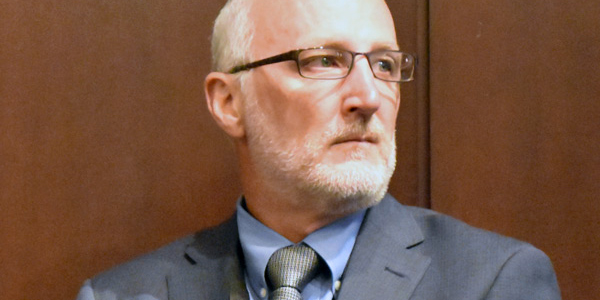The Western Interconnection Regional Advisory Board (WIRAB) on Thursday recounted its accomplishments in 2020 and laid out what it hopes to achieve in the coming year.
“It was an interesting year, but I think it was a successful year for the organization,” Eric Baran, program manager for electric system reliability at the Western Interstate Energy Board (WIEB), said during WIRAB’s monthly meeting.
WIRAB was established by Western governors under Section 215 of the Federal Power Act to advise NERC, WECC and FERC on proposed reliability standards for the Western Interconnection. The body, one of a handful that falls under the umbrella of WIEB, comprises members from all U.S. states and Canadian provinces that have load within the interconnection, as well as from northern Baja California, Mexico.
Among the group’s 2020 achievements, Baran said, were its contributions to a WECC Market Interface Committee (MIC) study to assess the reliability benefits and risks associated with the inclusion of day-ahead trading in CAISO’s Western Energy Imbalance Market (EIM). (See Study Measures Reliability Benefits of EIM Day-ahead.)
That study enumerated key benefits for the West from an EIM day-ahead market, including increased coordination across a broader geographic area; uniform application of advanced scheduling processes over multiple balancing authority areas; and improved positioning of resources for real-time operations. Risks included increased operational complexity, lower liquidity in the region’s existing bilateral markets and a potential disconnect between optimization of the electricity grid operations and natural gas pipeline system scheduling.
WIEB Executive Director Maury Galbraith highlighted the efforts of Alaine Ginocchio, a policy analyst for the board, in shepherding the market study through the MIC. “She worked long and hard in editing that paper with the folks at WECC, so that was instrumental,” he said.
WIRAB this year also “effectively encouraged” WECC to improve its assessment of long-term resource adequacy (RA) in the West, Baran said. As evidence of WIRAB’s success in this area, Baran noted that WECC will this month release an in-depth Western assessment of RA to complement an expand on NERC’s annual long-term resource adequacy assessment of the bulk electric system. (See WECC Board Adopts Reliability Risk List.)
Based on stakeholder input, WECC this year decided to make the West’s looming RA shortages a central focus of the organization. (See WECC Seeks to ‘Invent’ Future with RA Forum.)
“I think just based on the fact that WECC is going to be putting out this Western assessment … that was an effective initiative of WIRAB for this year,” Baran said.
Galbraith also lauded the work of California Energy Commission Vice Chair Janea Scott and Wyoming Public Commission Chair Kara Fornstrom, both WIRAB members, for increasing the group’s profile at WECC.
“I think they were instrumental in helping to raise awareness of the resource adequacy issue in the West, and without their leadership, I don’t think we would’ve made as much progress on that issue as we have,” Galbraith said.
WIRAB’s other 2020 accomplishments included:
- Submission of detailed proposals for WECC’s 2020 study program, including studies on weather-induced loss-of-load risk; essential reliability services from distributed energy resources; weak grid, system stability and path limits; transmission expansion reliability; and resilience.
- Encouraging Western reliability coordinators to adopt consistent metrics to measure performance and identify best practices.
- Advising WECC’s Board of Directors on the organization’s near-term priorities and the reliability challenges stemming from the region’s changing resource mix.
‘Deeper Dive’
Baran described four initiatives WIRAB will pursue in 2021, including an effort to advise WECC to continue improving its RA assessment to ensure that FERC, NERC, and state and provincial regulators “have access to accurate, consistent and timely information to inform capacity expansion decisions in the West.”
A second initiative will advise WECC to assess the reliability benefits and risks of implementing dynamic line ratings throughout the Western Interconnection, Baran said, noting that FERC last month issued a Notice of Proposed Rulemaking to require all transmission providers to implement seasonal and ambient-adjusted ratings on their lines. (See FERC Proposes Requiring Variable Tx Line Ratings.)
“But there’s still more work to be done on … managing transmission line ratings” in the West, Baran said.
WIRAB’s third initiative focuses on advising Western RCs to improve their operational performance metrics and “strive for exceptional reliability in the Western Interconnection.”
The fourth initiative will see WIRAB advising WECC to undertake “comprehensive and forward-looking assessments” of essential reliability services as Western states and provinces pursue “100% clean” or zero-carbon policies.
“I think we have a lot of work to do in 2021,” Galbraith said. “I think we’re going to continue to work with WECC to revise their Western assessment of resource adequacy.”
“The issue of dynamic line ratings is becoming increasingly important. … I expect [to be] doing a deeper dive into what are the barriers that exist to having more dynamic line ratings and better performance on the transmission systems,” he said.





